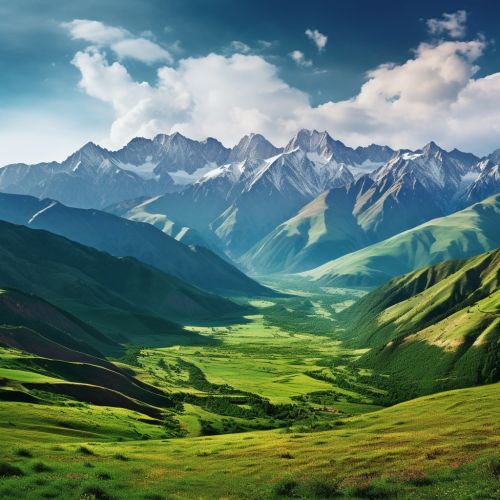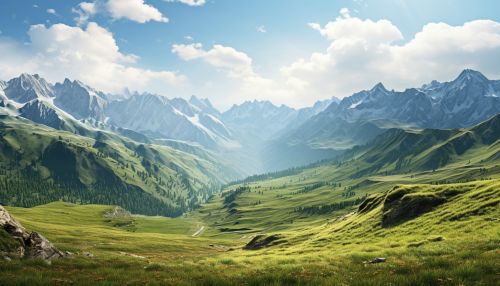Caucasus
Geography
The Caucasus is a region located at the border of Eastern Europe and Western Asia, situated between the Black Sea and the Caspian Sea. It is home to the Caucasus Mountains, which contain the highest peaks in Europe. The region is known for its diverse ethnic and linguistic groups, as well as its rich cultural and historical heritage.


Geology
The Caucasus region is characterized by its complex geological structure, which includes the Greater Caucasus Mountain Range, the Lesser Caucasus Mountains, and the Transcaucasian Depression. The region is located in an active seismic zone, where the Arabian tectonic plate collides with the Eurasian plate, resulting in frequent earthquakes and the formation of numerous mountain ranges and volcanoes.
Climate
The climate of the Caucasus varies greatly due to its wide range of altitudes and geographical locations. The region experiences a variety of climate zones, from humid subtropical and highland continental in the lower areas to alpine and tundra climates in the higher altitudes. The Greater Caucasus Mountain Range acts as a barrier to the cold air masses from the north, making the southern slopes warmer and more humid than the northern ones.
Flora and Fauna
The Caucasus is one of the most biologically diverse regions in the world, with a high level of endemism. The region's diverse ecosystems support a wide variety of plant and animal species. The Caucasus is home to over 6,000 species of plants, many of which are endemic to the region. The wildlife of the Caucasus includes numerous species of mammals, birds, reptiles, amphibians, and fish.
History
The history of the Caucasus is marked by its strategic location at the crossroads of Europe and Asia, which has made it a region of significant cultural, political, and military interaction. The region has been inhabited since the Paleolithic era, with numerous archaeological sites providing evidence of early human activity. Throughout its history, the Caucasus has been part of various empires and states, including the Roman, Byzantine, Persian, Ottoman, and Russian empires.
Demographics
The Caucasus is known for its ethnic and linguistic diversity, with over 50 ethnic groups and more than 60 languages spoken in the region. The largest ethnic groups in the Caucasus are the Russians, Georgians, Azerbaijanis, and Armenians. The region is also home to numerous smaller ethnic groups, each with their own unique culture, language, and history.
Culture
The culture of the Caucasus is as diverse as its people, with each ethnic group having its own unique traditions, customs, and arts. The region is known for its rich folklore, traditional music and dance, and unique architectural styles. The Caucasus is also home to numerous UNESCO World Heritage Sites, reflecting its rich cultural and historical heritage.
Economy
The economy of the Caucasus is diverse and includes agriculture, industry, and services. The region is rich in natural resources, including oil, gas, and minerals, which play a significant role in its economy. Agriculture is also an important sector, with the region producing a variety of crops, including grains, fruits, and vegetables. The Caucasus is also known for its wine production, with a long history of viticulture dating back to ancient times.
Politics
The political landscape of the Caucasus is complex, with the region being divided among several countries, including Russia, Georgia, Azerbaijan, and Armenia. The region has been a source of conflict and tension, with numerous territorial disputes and ethnic conflicts. Despite these challenges, the countries of the Caucasus are striving towards political stability and economic development.
